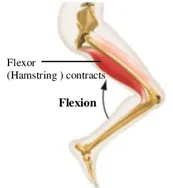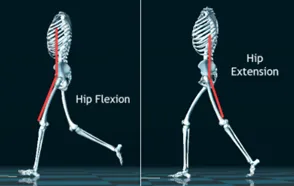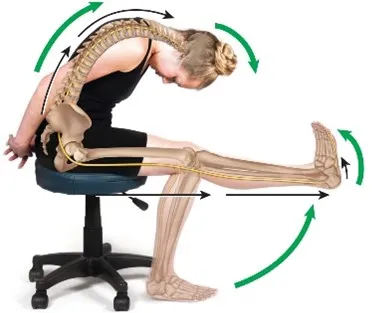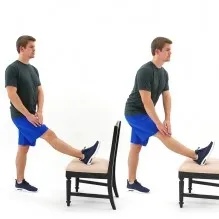Stretching Your Hamstrings (The Right Way!)
July 18, 2022
Articles
Stretching Your Hamstrings (The Right Way!)
July 18, 2022 Articles Stretching Your Hamstrings (The Right Way!) July 18, 2022 Articles Stretching Your Hamstrings (The Right Way!) July 18, 2022 Articles Stretching Your Hamstrings (The Right Way!) Have you never been able to touch your toes? Do you feel like no matter how much you stretch your hamstrings, they will always be […]
How do you check to see if your hamstrings are actually tight?
Get on the floor and lie on your back. You’re going to hold the back of the leg you want to test at ~90 degrees as pictured on the left above. While holding the back of your thigh so that it does not move, straighten your knee as far as you can until you feel a stretch. If you can almost straighten your knee completely, congratulations! You don’t have tight hamstrings. If you cannot get your knee even close to straight, your hamstrings may be tight.
What Are The Hamstrings?





Sources:
1. Hamstring Muscle Injuries – OrthoInfo – AAOS. (2022). Retrieved 18 July 2022, from https://orthoinfo.aaos.org/en/diseases–conditions/hamstring-muscle-injuries
2. posts., V. (2022). The Science Behind Triple Extension for Faster, More Efficient Running Form – Competitive Edge. Retrieved 18 July 2022, from https://compedgept.com/blog/triple-extension-running-form/
3. Hamstring Exercises For Preventing & Treating Pulled Hamstrings. (2022). Retrieved 18 July 2022, from https://www.sportsinjuryclinic.net/sport-injuries/thigh-pain/back-thigh/pulled-hamstring-exercises
he sciatic nerve and can feel like a muscle stretch. This is not the case. Remember earlier we talked about the hamstrings inserting around your knee? Changing the position of your ankle should not change the amount of hamstring stretch you feel; that increase in stretch is coming from tensioning your sciatic nerve. Unlike muscles, nerves do not really like to be stretched, and attempting to can sometimes even exacerbate low back pain. Most people can tolerate low levels of neural tension without issue, but if your goal is to stretch your hamstrings you want to avoid this common error.
So, what is the right way to stretch your hamstrings then?
You want to do the opposite of the pictures above; arch your back (not round), point your toes away, and while maintaining that arch in your back, lean forward (see below). If done correctly, you should feel a strong stretch only in your hamstring.
